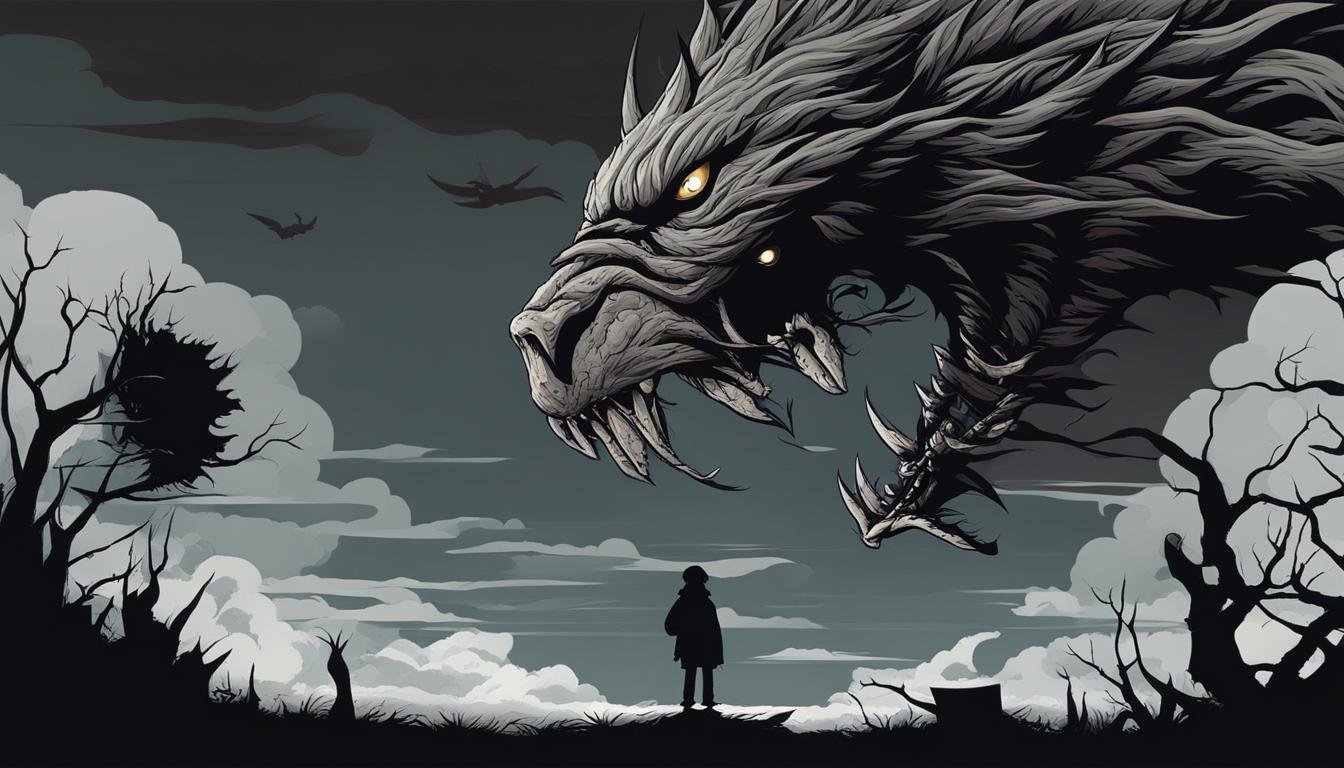The word “dread” is derived from the Old English word “dred,” which means to fear or tremble. In the Bible, dread is often associated with great fear or apprehension of danger. It expresses more than fear, but less than terror or fright. Dread can also mean awe or fear united with respect. Biblical instances of dread can be seen in various contexts, such as the dread of evil, the dread of suffering, and the dread of divine displeasure. It is a feeling of uneasiness or alarm that is excited by expected pain, loss, or other forms of evil. The cause of fear, or the thing dreaded, can be a person or a thing. Dread can also be used as an adjective to describe something that is terrible, frightful, or awful. Overall, dread in the Bible is a complex and multifaceted emotion that involves a combination of fear, awe, and respect.
Key Takeaways:
- Dread in the Bible is associated with great fear or apprehension of danger.
- Dread can also mean awe or fear united with respect.
- Biblical instances of dread can be seen in various contexts.
- Dread is a complex and multifaceted emotion that involves a combination of fear, awe, and respect.
- Dread can also be used as an adjective to describe something terrible or frightful.
The Impact of Dread on Faith
In the Bible, dread has a profound impact on faith and scripture understanding. The fear of God, which is often associated with dread, is considered a virtue in biblical teachings. It is a reverential fear that involves a deep respect and awe for the power and authority of God. This fear motivates believers to worship and follow God faithfully. It is a recognition of God’s holiness and a realization of our own sinfulness in comparison.
The dread of God’s judgment also plays a role in shaping our faith and guiding our actions. It reminds us of the consequences of disobedience and encourages us to lead a righteous life. The fear of God is closely linked to trust and reliance on Him, as it acknowledges His sovereignty and our need for His guidance and protection.
“The fear of the LORD is the beginning of wisdom; all who follow his precepts have good understanding. To him belongs eternal praise.” – Psalm 111:10
“Serve the LORD with fear and celebrate his rule with trembling.” – Psalm 2:11
| Impact of Dread on Faith | Scripture Examples |
|---|---|
| Inspires worship and obedience | Exodus 34:14 |
| Encourages a righteous life | Proverbs 8:13 |
| Guides actions and decisions | Psalm 25:12 |
| Promotes trust and reliance on God | Proverbs 3:5-6 |
By embracing dread in a reverential manner, believers can grow in their relationship with God and live a life that honors and pleases Him.
Biblical Examples of Dread
In the Bible, there are various instances where dread is mentioned, revealing its significance in different contexts. These examples shed light on the emotions and reactions associated with dread, providing insights into its implications and impact on individuals and communities. Let’s explore some prominent biblical examples of dread:
Job’s Experience of Dread
“My days are swifter than a weaver’s shuttle and come to their end without hope. Remember that my life is a breath; my eye will never again see good.” – Job 7:6-7
In the book of Job, Job undergoes immense suffering and loss, causing him to experience overwhelming dread and fear. He expresses his feelings of hopelessness and despair, questioning God’s intentions and longing for relief. Job’s plight emphasizes the depth of dread and its potential impact on one’s faith and perception of God.
Isaiah’s Warning of Dread
“Their slain will be cast out, and the stench of their corpses will rise; the mountains will flow with their blood. All the host of heaven shall rot away, and the skies roll up like a scroll. All their host shall fall, as leaves fall from the vine, like leaves falling from the fig tree.” – Isaiah 34:3-4
In the book of Isaiah, the prophet warns of the dreadful fate that awaits those who do not trust in God and rely on their own strength. The vivid imagery of destruction and decay illustrates the consequences of faithlessness and disobedience. Isaiah’s message instills a sense of dread, urging individuals to reconsider their actions and turn to God for salvation.
Daniel’s Terrifying Vision
“I saw in the visions of my head as I lay in bed, and behold, a watcher, a holy one, came down from heaven. He proclaimed aloud and said thus: ‘Chop down the tree and lop off its branches, strip off its leaves and scatter its fruit. Let the beasts flee from under it and the birds from its branches.'” – Daniel 4:13-14
In the book of Daniel, Daniel has a vision that is so terrifying that it causes those around him to flee in terror. This vision showcases the power and majesty of God, inspiring both dread and reverence. Daniel’s encounter serves as a reminder of God’s authority and the consequences of defying His divine will.
The Moabites’ Fearful Reaction
“And Balak the son of Zippor saw all that Israel had done to the Amorites. And Moab was in great dread of the people because they were many.” – Numbers 22:2-3
In the book of Numbers, the Moabites are described as being sick with dread upon hearing of the approaching Israelites. Their fear and apprehension lead their king, Balak, to make hasty and unwise decisions. This example highlights the paralyzing effect of dread and its potential to influence actions and outcomes.
| Book | Example of Dread |
|---|---|
| Job | Job’s expression of hopelessness and despair |
| Isaiah | Warning of the dreadful fate for the faithless |
| Daniel | Terrifying vision revealing God’s power |
| Numbers | Moabites’ fearful reaction to the approaching Israelites |
These biblical examples demonstrate the complex and multifaceted nature of dread. Whether in the form of personal suffering, divine warnings, or reactions to impending danger, dread evokes a range of emotions and compels individuals to confront their fears and seek guidance from God.
Conclusion
In conclusion, the concept of dread in the Bible is a complex and multi-dimensional emotion. It is often associated with the fear of God, which is seen as a virtuous and necessary part of faith. The fear of God involves a deep reverence and awe for His power and authority.
It motivates believers to worship and follow God faithfully, and it reminds them of the consequences of disobedience. While dread can be overwhelming, it also serves as a reminder of God’s sovereignty and our need for His guidance and protection.
Overall, a healthy fear of God, combined with faith, leads to a deeper understanding of His love, mercy, and grace. By embracing dread in a reverential manner, believers can grow in their relationship with God and live a life that honors and pleases Him.
FAQ
What is the meaning of dread in the Bible?
Dread in the Bible refers to a feeling of great fear or apprehension of danger. It can also mean awe or fear combined with respect. The cause of fear or the thing dreaded can be a person or a thing.
How does dread impact faith?
Dread, specifically the fear of God, plays a significant role in shaping faith. It is considered a virtue in biblical teachings and involves deep respect, reverence, and awe for God’s power and authority. It motivates believers to worship and follow God faithfully, acknowledging His holiness and their own sinfulness. The fear of God also reminds believers of the consequences of disobedience and encourages righteous living.
Can you provide examples of dread in the Bible?
Yes, in the book of Job, Job experiences great dread and fear during his severe suffering and loss. In Isaiah, the prophet speaks of the dread that falls upon those who do not trust in God. Daniel has a vision that inspires both dread and reverence, revealing the power and majesty of God. The Moabites are described as sick with dread when they hear of the approaching Israelites, leading to unwise decisions with negative consequences.

I’m Benjamin, a passionate spiritual seeker and creator of Verses and Prayers. Alongside my girlfriend Emma and our pet lizard Mulle, I cherish family life, enjoy exploring new places, and am deeply involved in my church community. My love for reading and singing biblical verses inspires every aspect of my journey.

